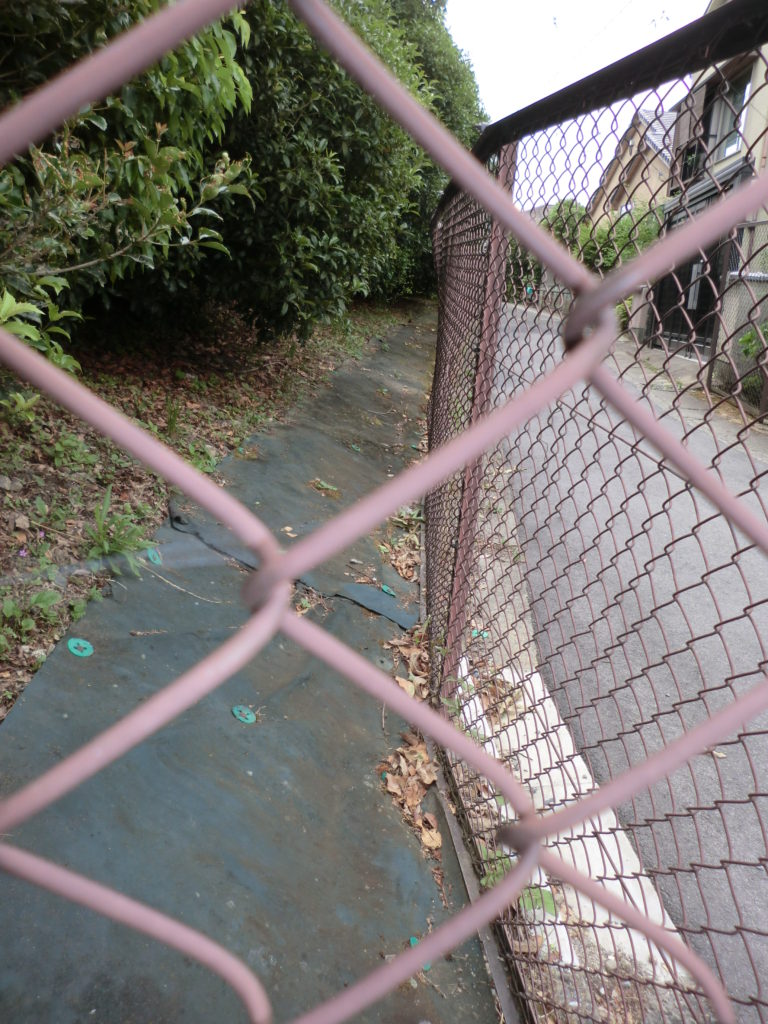When we moved to our neighborhood almost five years ago, there was a rather large green field on a road near our house. Of course, in the current political climate promoting economic growth, three years ago the field became houses and even one apartment building.

Only one strip of land along the narrow river, about 15 meters wide by 100 meters long, was left as grass for a few years. However, last week it was covered up with a long and thick black plastic mat so that grass would not grow anymore.
I was shocked by this. Up until now, the grass had been cut regularly but had never been completely covered up. Having read that the population of insects in the world has dropped by 75% over the past 40 years, and populations of wild birds have experienced major declines as well, I could not imagine how people could just throw away land like this and not share it with wildlife.
It was my Japanese language lesson the next day, so I took a photograph of this strip of land covered by plastic and showed it to my teacher, who said “sore ha chotto. Cosmos nado no hou ga ii”, which means, roughly translated, “no, that is not very good. How about letting some cosmos and wildflowers grow there?”
I also remembered that a much smaller and much narrower strip of land, perhaps 1/30 of the size of the one near my house, had been covered up with a similar plastic sheet on territory owned by the Kunaicho, the imperial land preserve about two kilometers from our house, a couple of years ago. I had noticed that plastic sheet when it was newly installed back then while walking the dog and I had been extremely dismayed.
Now, after seeing the new and much larger plastic sheet near my home, I decided to investigate the older one more closely so I walked over there and brought my camera to document its condition.
Of course, it had been degraded by the sun and weather and was now torn in various spots, which was good since small plants were able to grow back. However, these torn places also revealed fibrous edges which are shedding plastic fibers into the environment. I should note that a big river, Otowagawa, is about 10 meters away from this plastic sheet, so the pieces of microplastic must be going straight into the water.
Reaching through the chain-link fence of the Kunaicho, I touched the plastic sheet: it felt and looked like a sort of thick and heavy plastic foam.
We already know from various scientific studies that we are drinking and breathing microplastics in significant quantities every day, and this is not a situation that should be tolerated.
I plan to write a letter to Kyoto City and express my opinion that these plastic sheets are horrible for the environment, for the water and for the increasingly beset insects and wildlife. Cutting the grass is fine, but covering it over, especially with something that puts microplastics into the water, should not be allowed.
It’s not easy for me to write a technical letter like this in Japanese, so my husband is helping me. It’s kind of funny because it’s our 27th wedding anniversary in a few days and I told him it can be his present to me.
I have no idea if my letter will have any impact. However, I simply have to try. One never knows when must become an impromptu environmental activist, but that moment has arrived for me.
****************************
For more by Marianne, see how she landed a contract for her second novel here. For her double life as a Shakespearean scholar and fiction writer, see here.
